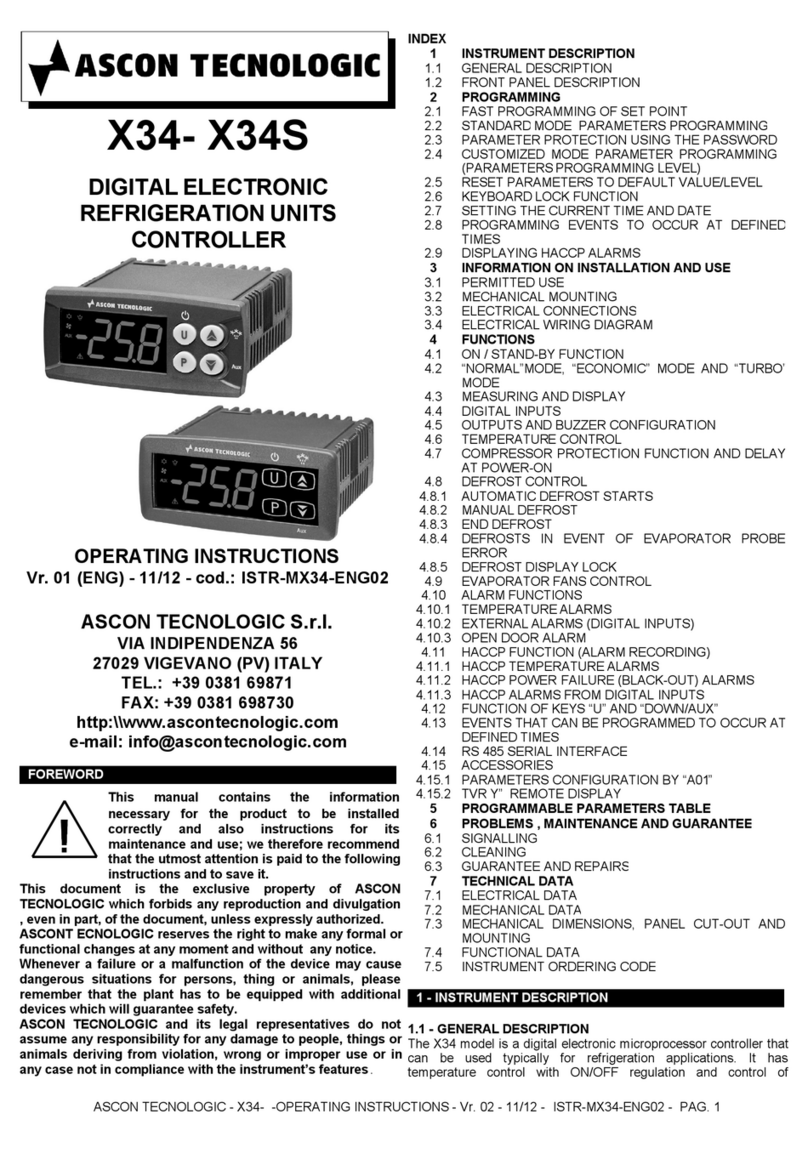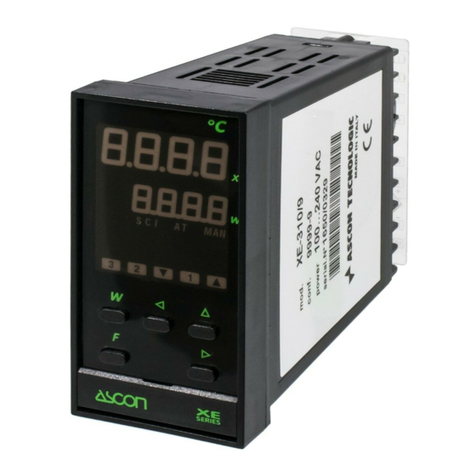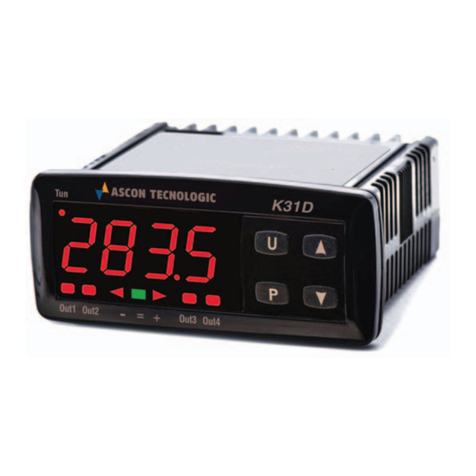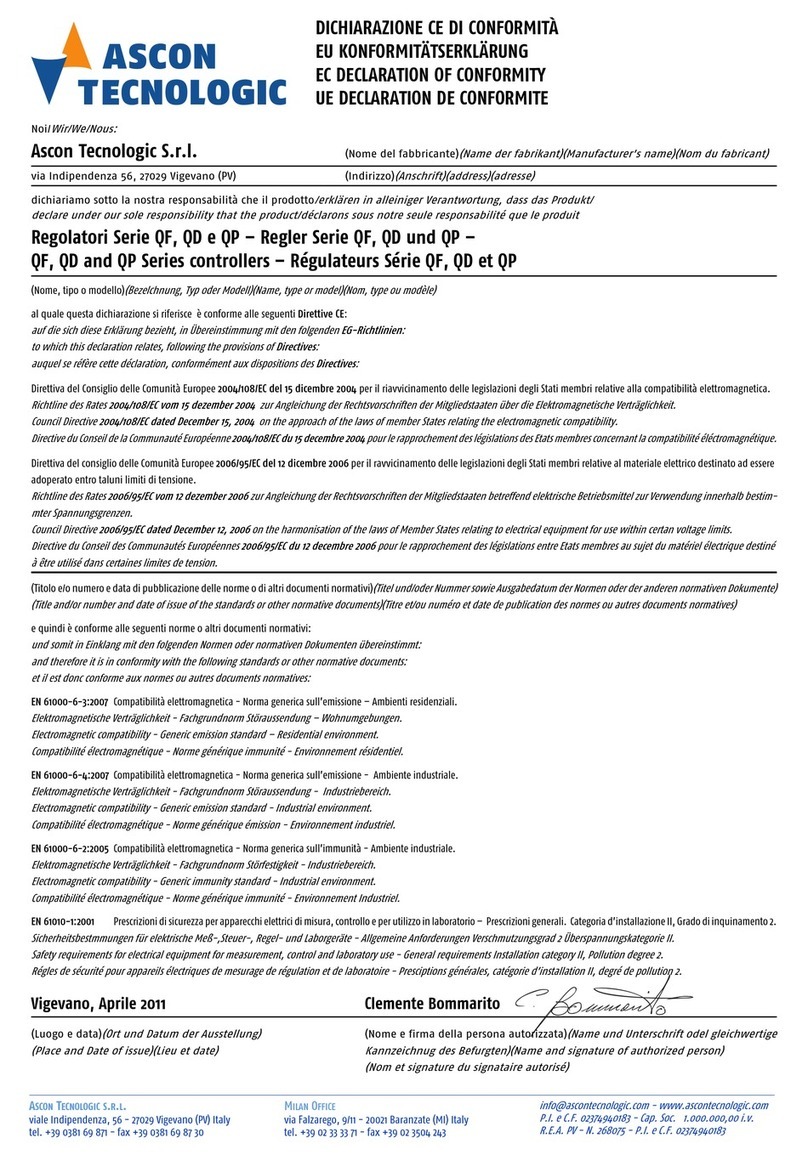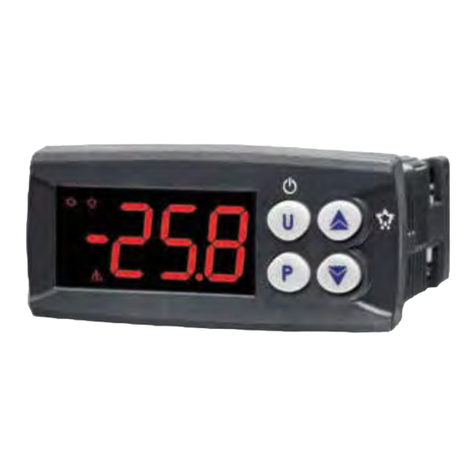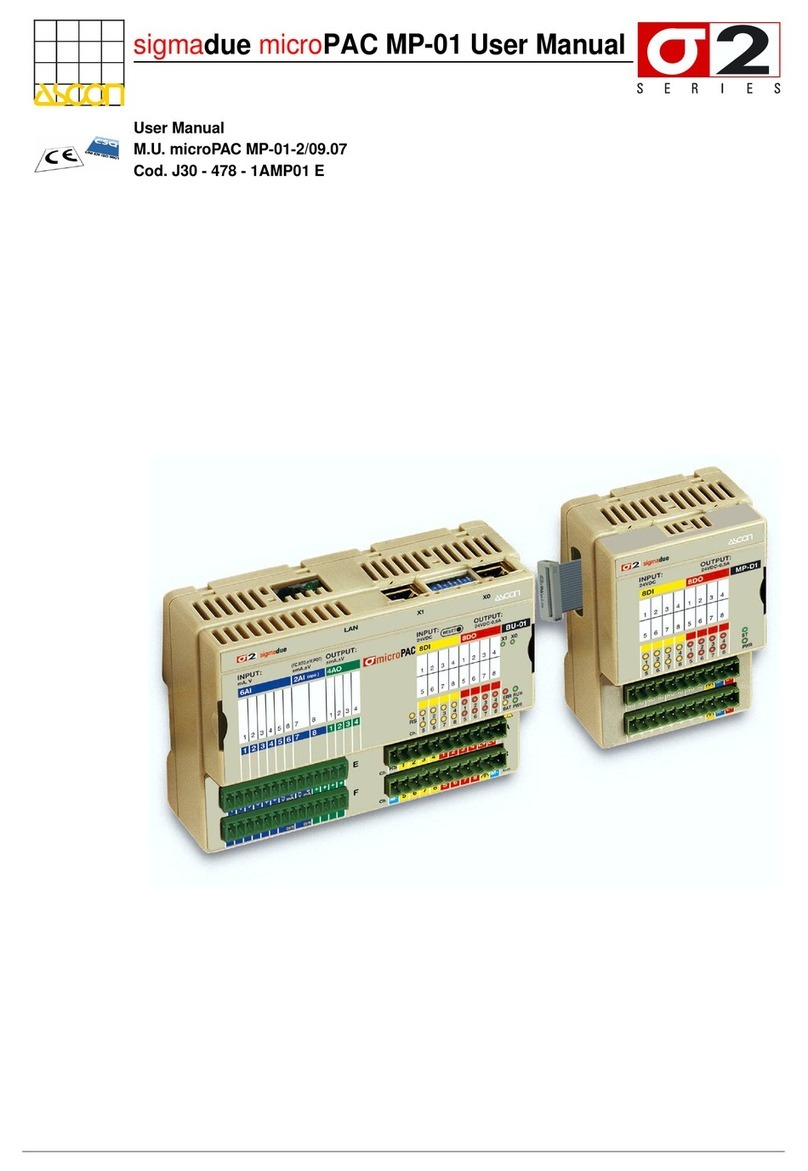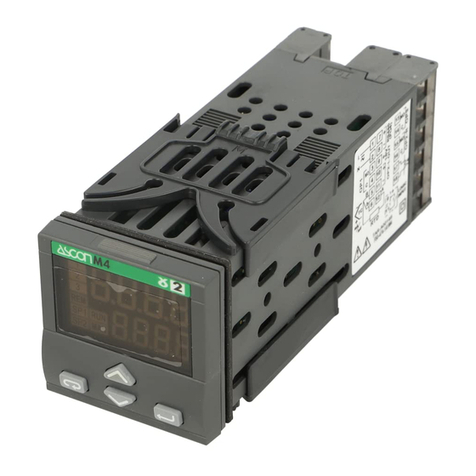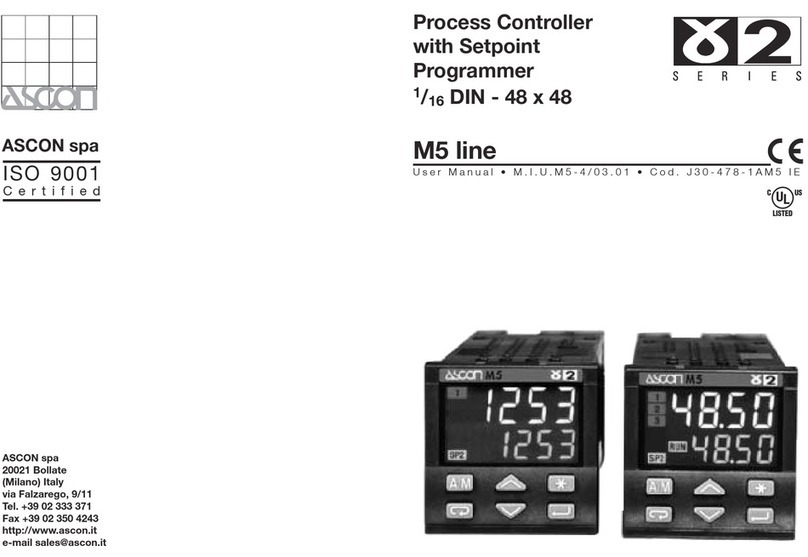Ascon Tecnologic - e33 - OPERATING INSTRUCTIONS - PAG. 2
1.2 Front panel pescription
e33
P
U
Aux
1
2
3
4
5
9
7
8
10
6
1 : Used for setting the Set Point (short press) and for
programming the function parameters (pressed for 5 s).
In programming mode is used to enter in parameters edit
mode and confirm the values. In programming mode
can be used together with the key to change the pro-
gramming level of the parameters. When the keyboard is
locked, the keys and used together (hold pressed
for 5 s), unlock the keyboard.
2 /Aux: In programming mode is used for decreasing
the values to be set and for selecting the parameters. If
programmed using the tFb parameter, when it is pressed
for 1 s during normal operation mode, it can perform other
functions such as Eco mode selectionf, Aux output control
etc. (see “Functions of keys
/
and /Aux”).
3 /:In normal mode (pressed for 5 s) can be used
to start/stop manual defrosting ( ). In programming
mode is used for increasing the values to be set and for
selecting the parameters. In programming mode can be
used together with key to change parameters level.
Pressed together with the key for 5 s allows the key-
board unlock.
4 /:Used (short press) for displaying the instrument
variables (measured temperatures etc.). In programming
mode can be used to return in normal mode (hold for 2 s).
If programmed using the tUf parameter, when it is
pressed for 1 s during normal operation mode allows
to turn ON/OFF (Stand by) the control action or other
functions like the Aux input control etc. (see “
Functions of
keys
/
and /Aux
”).
5 LED dp: Decimal Point, when the instrument is placed in
Stand by mode, this is the only lighted LED. During the
normal operation is the decimal point. In programming
mode, while the parameter code is displayed, the dot
indicates the parameter protection level: not protected
(lit up), protected (flashing) and hidden (turned OFF).
6 LED
: Indicates the output status (compressor or
temperature control device) when the instrument
is programmed for cooling operation; ON (lit up),
OFF (turned OFF) or inhibited (flashing).
7 LED :Indicates the output status (compressor or temper-
ature control device) when the instrument is programmed
for heating operation; ON (lit), OFF (turned OFF) or inhib-
ited (flashing).
8 LED
:Indicates the alarm status: ON (lit),
OFF (turned OFF) or silenced or stored (flashing).
9 LED : Indicates that the defrost is in progress (on) or
drainage time in progress (flashing).
10 LED : Indicates fan output status ON (on), OFF (off)
or inhibited (flashing).
2. PROGRAMMING
2.1 Fast Set Point programming
The normal mode to program the setpoint is done by mo-
mentarily pressing the key, the display shows SP (or SPE)
alternated to the programmed value.
To change it press the key to increase the value or to
decrease it.
These keys increase or decrease the value one digit at a time,
but if the button is pressed for more than one second the value
increase or decreases rapidly and after two seconds the speed
increases even more in order to quickly reach the desired value.
However, through ted parameter you can determine if and
which Set Point can be set with the key rapid procedure.
The parameter can have the following values:
oF The Set Points cannot be changed with the key rapid
procedure (pressing/releasing the key, nothing happens);
1
Only SP can be set with this procedure (Normal Set Point);
2Only SPE can be set with this procedure (Eco Set Point);
3Both SP and SPE can be set with this procedure;
4To select the Active Set Point (SP or SPE);
5Both SP and SPH can be set with this procedure (SPH:
Set Point Turbo or independent Heating Set Point);
6All the 3 Set Points (SP/SPE/SPH) can be set with this
procedure.
For example, in case the parameter TEd = 1or 3, the proce-
dure is the following:
Press and release the key, the display shows SP alter-
nated to the Set Point value. To change the Set Point, press
the key to increase the value or to decrease it
If only Set Point 1 is present (TEd = 1), once the desired value
is set, press the button to exit the fast programming mode.
If also the Eco Set Point (TEd = 3) can be set, pressing and
releasing again the button the display shows SPE alter-
nated to its programmed value. To change the value use
the and keys as for the SP Set Point value. Once the
desired value is correctly set, press the button to exit the
fast Set Point change.
For SPH (TEd = 5or 6) the procedure is the same of the one
used for SPE.
To exit the fast Setpoint programming mode push the
key after the last Set Point has been displayed or pressing
no buttons for about 10 s, after which the display returns to
normal operation.
2.2 Standard mode parameters programming
To access the instrument function parameters when pass-
word protection is disabled, press the key and keep it
pressed for about 5 seconds, after which the display shows
the code that identifies the first programmable parameter
The desired parameter can be selected using the /keys,
then, pressing the key, the display shows the parameter
code alternated to its value that can be changed with the
and keys.
Once the desired value has been set, press the key
again: the new value is stored and the display shows only
the code of the selected parameter
Pressing the and keys, it is possible to select another
parameter and change it as described.
